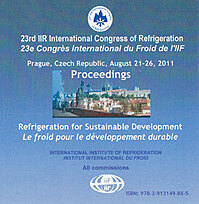
Document IIF
Analyse des potentiels de réduction des émissions de CO2 et de la consommation d'énergie dans des immeubles non résidentiels à Shanghai.
Potentials analysis for carbon mitigation and energy use reduction in Shanghai non-residential buildings.
Numéro : pap. ID: 270
Auteurs : BAI W., LONG W. D., LIANG H., et al.
Résumé
The aim of this study is to show the potentials of energy consumption and the energy-related carbon emissions reduction in Shanghai non-residential buildings by scenario analysis method and to discuss the contributions of technical measures and policies for pursuing energy saving and carbon mitigation. System dynamic tool is applied to simulate the complicated social-economic-energy system over time. This paper defines three types of scenarios, BAU (business-as-usual), reference and ambitious scenarios involving different technical measures and policies. In order to highlight the importance of policies, this paper adds several sub-scenarios and compares the contributions of them. The results show that Shanghai can reduce by at most 22% of building energy use and 30.9% of the energy-related carbon emissions by 2020 on the 2005 baseline. The strong economic incentives, including both encouraging and penalty measures, are quite important for Shanghai building energy efficiency and CO2 mitigation.
Documents disponibles
Format PDF
Pages : 8 p.
Disponible
Prix public
20 €
Prix membre*
Gratuit
* meilleur tarif applicable selon le type d'adhésion (voir le détail des avantages des adhésions individuelles et collectives)
Détails
- Titre original : Potentials analysis for carbon mitigation and energy use reduction in Shanghai non-residential buildings.
- Identifiant de la fiche : 30002389
- Langues : Anglais
- Sujet : Environnement
- Source : Proceedings of the 23rd IIR International Congress of Refrigeration: Prague, Czech Republic, August 21-26, 2011. Overarching theme: Refrigeration for Sustainable Development.
- Date d'édition : 21/08/2011
Liens
Voir d'autres communications du même compte rendu (569)
Voir le compte rendu de la conférence
Indexation
-
Global Sensitivity Analysis applied to a dynami...
- Auteurs : RICCARDI B., SISTI E., CARNIELETTO L., RAMPAZZO M., DE CARLI M.
- Date : 21/08/2023
- Langues : Anglais
- Source : Proceedings of the 26th IIR International Congress of Refrigeration: Paris , France, August 21-25, 2023.
- Formats : PDF
Voir la fiche
-
International energy efficiency in buildings st...
- Auteurs : KHALIL E. E.
- Date : 20/07/2017
- Langues : Anglais
- Source : 8th international conference on compressors and refrigeration, 2017.
- Formats : PDF
Voir la fiche
-
Active and passive cooling techniques for build...
- Auteurs : ALGHAMDI K. I., BACH C. K., SARFRAZ O., YATIM A. S.
- Date : 21/08/2023
- Langues : Anglais
- Source : Proceedings of the 26th IIR International Congress of Refrigeration: Paris , France, August 21-25, 2023.
- Formats : PDF
Voir la fiche
-
Eco-gestures for a reasonable use of air condit...
- Auteurs : DEVIN E., TREMEAC B.
- Date : 21/08/2023
- Langues : Anglais
- Source : Proceedings of the 26th IIR International Congress of Refrigeration: Paris , France, August 21-25, 2023.
- Formats : PDF
Voir la fiche
-
FACTORS INFLUENCING OVERALL BUILDING EFFICIENCY.
- Auteurs : JONES J. R., BOONYATIKARN S.
- Date : 1990
- Langues : Anglais
Voir la fiche
